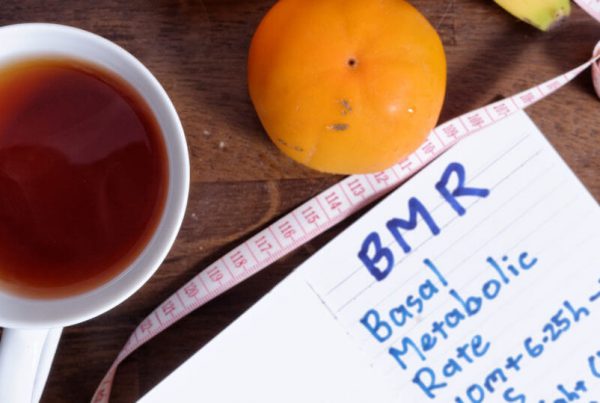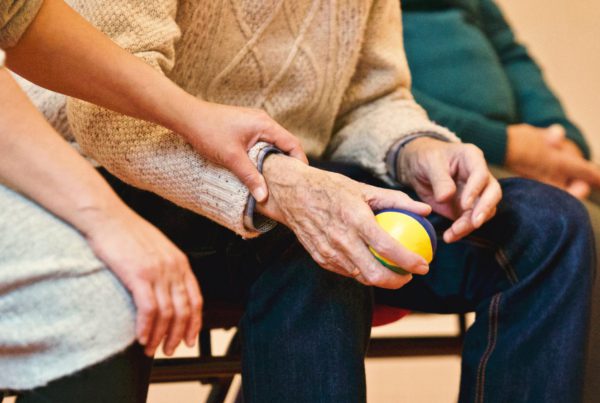Raise your hand if you said something like:
“In 2016, I’m finally going to lose weight!”
If you did, you’re not alone. According to Statistics Brain Institute, a company that compiles statistics on a variety of topics and industries, losing weight was (unsurprisingly) the #1 New Year’s resolution made in 2015.
However, according to the same research, only 8% of people reported achieving their resolution by the end of 2015. Also not terribly surprising.
But forget 2015. It’s now into the third week of 2016, and this year is the year that you can actually achieve your fitness/weight loss goal. It’s completely possible; you just need to go about it the right way.
Yes, it will take hard work and dedication. No, it doesn’t mean that you have to give up everything you enjoy doing (unless what you enjoy doing is surviving on exclusively burgers and soda). Follow the below steps and by this time next year, you’ll be celebrating the beginning of 2017 with a new, fitter you.
Step 1: Throw Your Scale out the Window
This is key. In 2016, you’re going to part with your bathroom scale. Why? Because it’s been serving you a steady stream of lies every time you’ve stepped on it in the past.
How?
You say that you want to lose weight. But what is weight, really? It’s really just a number, and seeing a number rise or fall on the scale doesn’t tell even close to the whole story. What you’re actually trying to say when you say you want to lose weight – whether you realize it or not – is you want to lose fat. Pounds of fat.
The truth is: your body isn’t just a vessel that weighs a certain amount; it’s made up of a lot of different things, including fat, muscle, bone mineral, and body water. This way of dividing your body into its parts is called your body composition. When you lose (or gain weight), the actual changes in your body that your scale registers as weight changes are actually changes in one or more parts of your body composition – changes in muscle, changes in fat, etc.
Weighing yourself on the scale when you’re trying to lose weight – or worse: weighing yourself every day – can set you up for failure by not accurately reporting your progress, causing you to become discouraged. Here’s how.
Here’s a profile of someone who is just beginning their fitness program, and is doing moderate to heavy weight lifting as part of their plan. Here’s the same person, about three months later.
As a result of a proper diet and consistent exercise, this person has lost 5 pounds of fat. But because this person has been building muscle as well, their weight hasn’t changed at all.
If this person’s goal was simply “weight loss,” despite their positive gains in muscle and losses in fat, this person might think that no progress was made. After months of kicking yourself into shape and being super careful about your diet, a lack of movement on the scale can be extremely discouraging.
This is why you need to focus on improving your body composition – not weight loss. Weight loss doesn’t mean anything if you don’t know what you’re losing and gaining.
Step 2: Learn a bit about calories
“Counting calories.”
For some people, this phrase brings feelings of the purest dread. Not only do people think it’s a lot of work, but that it also means the end of eating anything delicious.
Fortunately, keeping track of calories isn’t that hard, and depending on what your goals are, you may be able to eat more than you think. But first, here are some basic truths on calories.
First: let’s get something straight right now – from an energy storing perspective, it doesn’t matter all that much how often/when you eat. According to the Centers for Disease Control and Prevention (bold text added):
The time of day isn’t what affects how your body uses calories. It’s the overall number of calories you eat and the calories you burn over the course of 24 hours that affects your weight.
It helps to think of your caloric needs like a daily budget. If your needs are 2,400 calories and you “spend” a 1,000 calories on breakfast, that’s fine – it’s just that you only get 1,400 calories until breakfast the next day.
Second: everyone’s caloric needs are different; so that 2,000 daily recommended calorie intake on the nutrition label? Consider that to be the most general, vaguest set of guidelines that almost certainly will set you up for failure, especially since it was picked in no small part because it was just an easy number to remember, rounded off to the nearest thousand for convenience 1.
To find your individual caloric needs, you need to estimate something called your Total Daily Energy Expenditure – the amount of calories that you burn in a 24-hour period. Generally speaking, your TDEE has two major components:
- Basal Metabolic Rate (BMR): the total number of calories your body requires to “stay on” and power bodily processes like brain activity, pumping blood, breathing, digesting, etc.
- Activity Rate: an estimated index of how active you are over 24 hours
To get TDEE, multiply BMR with Activity Rate. For example, someone with a BMR of 1600 calories and is moderately active (exercises 3-5x a week) would have a total caloric need of around 2,480 calories, nearly 500 calories more than the traditional 2,000 calorie diet.
Use your TDEE as the baseline from how you create your diet. “Cutting calories” doesn’t mean “starvation” – it means making a moderate reduction in your caloric intake as determined by your daily needs.
Based on what your goals are, designing a diet and knowing what’s an appropriate caloric intake does get a little more complicated, but there’s a complete guide to using BMR to creating a diet right here.
Step 3: Choose 1 Goal (from 2 options) and Plan Your Diet

source: Flickr
In 2016, you’re not going to think about “weight loss” any more. Instead, you’re going to think about choosing from one of the two following goals: “fat loss” or “muscle gain.” Both of these goals will have the effect of reducing your overall body fat percentage but achieve it in different ways.
But just one goal – not both at the same time? Can’t you lose fat and gain muscle at the same time? Maybe. But it will be extremely difficult to effectively do both over any extended period of time. This is because the nutritional and caloric needs your body requires to gain muscle effectively are different from those when you want your body to lose fat.
Fat Loss
If you want to lose fat, you need to encourage your body to enter what’s called a catabolic state – a state when your body breaks down body tissue instead of building it. This requires you to take in fewer calories than you bring in.
But remember: your TDEE is made of two parts, BMR and Activity Level, so taking in fewer calories doesn’t necessarily (and shouldn’t) mean you have to cut out breakfast completely or something equally drastic. If you weren’t working out at all before, simply increasing your activity level by starting an exercise program while maintaining your caloric intake may be enough to trigger fat loss. If this sounds like you, simply beginning an exercise program is a good way to get started.
However, most people will need a combination of caloric reduction and exercise to achieve consistent and healthy fat loss. How many calories you need to reduce will vary based on your individual body composition and goals.
Muscle Gain
You can’t lose fat forever, and at some point you will need to work on developing muscle – or at the very least, work to preserve the muscle that you have already. This will require a different diet and exercise plan than the one designed for fat loss. Instead of getting your body into a catabolic state, you’ll want to enter into an anabolic state – a state where your body builds tissue instead of breaking it down.
To build muscle, your body needs resources. This means proper nutrition – sufficient protein intake is critical when trying to increase muscle mass – but equally as important is eating enough calories. There is a popular misconception that taking in excessive amounts of protein is the key to muscle gain, but in a Journal of the International Society of Sports Nutrition publication, high performance athletes who failed to meet their caloric needs were found to have limited lean body mass gains, despite increasing their protein beyond their daily recommended needs.
So what is a good estimate of your caloric needs for this goal? Although nutrition plays a large role in determining diet, from a caloric standpoint, research suggests that maintaining an energy surplus of about 15% is appropriate for developing musculature. This means, all else being equal, the moderately active person with a BMR of 1,600 calories would want to shoot for around 2,852 calories a day.
Step 4: Plan for a Marathon, not a 100-yard dash

source: Flickr
In a world where virtually every piece of information in all of human history can be searched for in seconds by anyone with a smartphone, people are used to getting the results they want when they want them. Unfortunately, you can’t expect the same from your body.
That’s why if you hang around enough fitness people for long enough, you’ll eventually hear them talk about a “fitness journey.” That’s because that’s exactly what fitness is – a journey. It’s not a sprint, and it will take time to make meaningful changes that last.
For example, in a study published in the Journal of Clinical Endocrinology & Metabolism, participants were divided into two groups that created a 25% energy gap between what they ate and what they burned. The first group did this by only dieting (25% caloric reduction) and the second achieving it by splitting the energy deficit by both diet and exercise (12.5% caloric reduction + 12.5% increase in energy use due to increased exercise).
The results were interesting: both groups were able to reduce their body weight by about 10% and their total fat mass by 24%, indicating that for fat/weight reduction, caloric reduction by any means is critical, regardless of how it is achieved. For a 180 pound person, a 10% reduction comes out to 3 pounds of loss per month, which is less than a pound a week.
This can be challenging for some people – to not see any measurable changes on the scale after a week of diet/diet+exercise. Even after two weeks, you may only see your weight decrease by a pound, maybe two. If you’re measuring your weight by just using a scale, this can be especially frustrating (another reason why you should get rid of it).
Plan for the long term, and don’t expect to see dramatic changes right away. And because you’re planning for the long term, that also means that you don’t need to be perfect every single day. That’s going to put on too much pressure, cause frustration, and maybe cause you to fail. That’s why this guide’s final step is important.
Step 5: Let Cheat Days Happen (and don’t feel bad about it)

source: Flickr
That’s right. Break your diet every once in a while. Skip the odd gym day and go out for pizza and beer. It’s OK.
Didn’t expect that, did you?
But wait! Isn’t this how you “gain it all back”? You hear stories about people breaking their diets and then gaining 5 pounds or more over a cheat weekend, erasing a month of hard work.
This is where your scale – if you’re still using one – really can screw you up with negative thinking and discouragement. So you gained 5 pounds over the weekend; is your scale lying? Not exactly. Yes you gained 5 pounds, but more than likely, it’s 5 pounds of water.
Your weight will fluctuate throughout the day based on what you eat and drink. If you’re dieting, a pretty common/near universal strategy is to reduce your carbohydrate intake (aka “cutting carbs”).
By reducing your intake of foods rich in carbohydrates, you’re reducing your overall glycogen stores. Glycogen is a molecule your body converts into energy and is a source of short-term energy; as opposed to fat, which is typically used in cases where energy from glycogen or other short-term energy sources aren’t available.
What does glycogen have to do with scales, water, and cheat days? Everything, actually.
Water molecules love glycogen. In fact, for every gram of glycogen in your body, there will be 3-4 grams of water bonded to it. Your loading your body with glycogen when you’re eating your carbohydrate-dense food and drinks on your cheat day, and water is bonding to it. So when you step on the scale the day after, it’s very possible to see yourself gain several pounds in a day.
This doesn’t mean you gained it all back. Chances are, it’s just water and once you get back on your diet and exercise program, your weight will be back to where it was in a couple days. Watch.
5 Step Plan Review
Let’s review your 5 step plans for a weight loss plan that you’ll actually do in 2016.
- Throw out your scale and get your body composition tested. If your gym doesn’t do it, join one that does. The longer you stick with a scale, the longer you’ll be frustrated.
- Learn the basics of calories and find your TDEE.
- Pick 1 goal. You can change it later.
- Prepare for your own “fitness journey.” Slow and steady wins the race.
- Have a cheat day. It will help you stay sane, and it will give you something to look forward to every week or two to keep you motivated.
Good luck!
Source: https://inbodyusa.com/blogs/inbodyblog/84369153-how-to-make-a-fitness-new-years-resolution-you-ll-actually-do/








